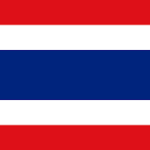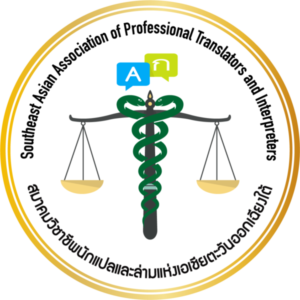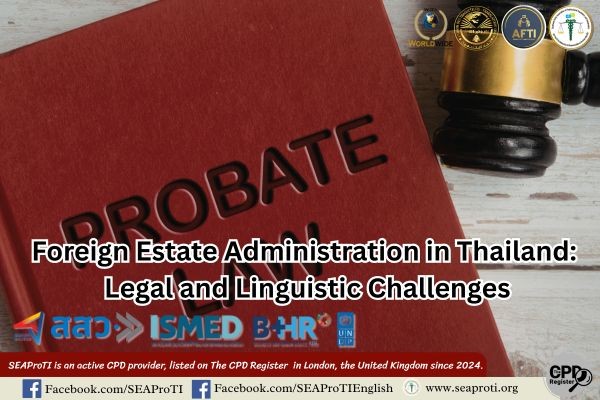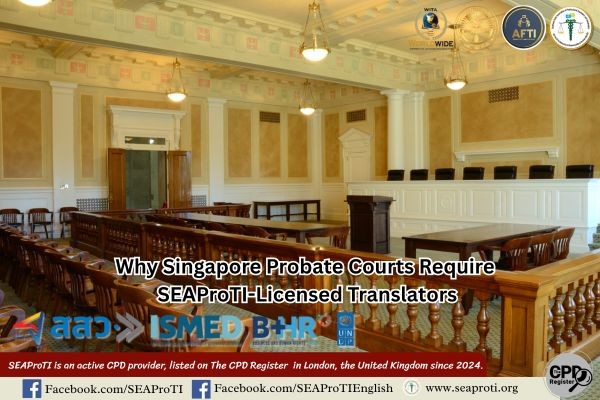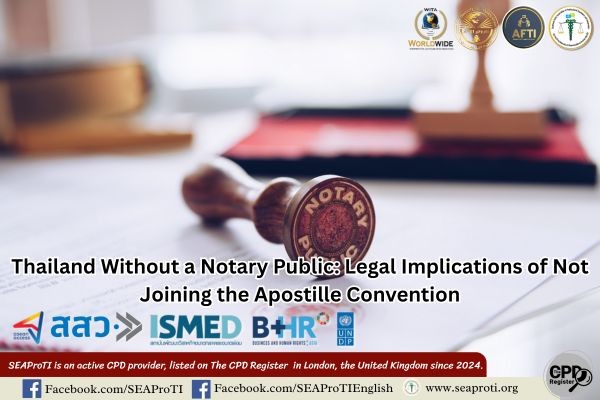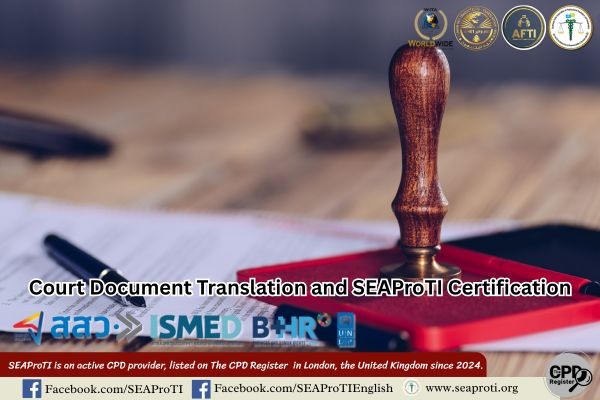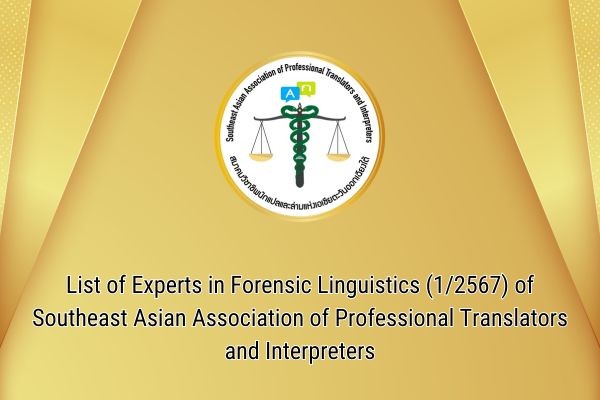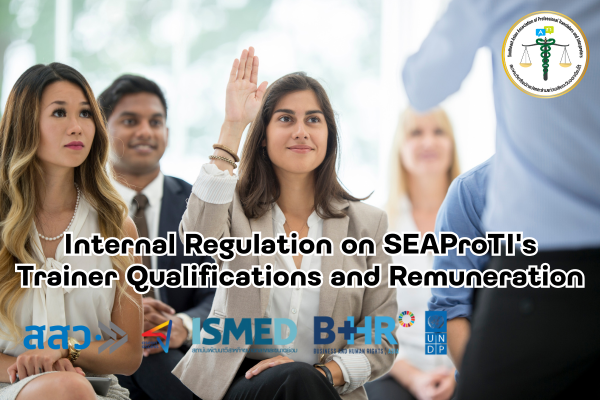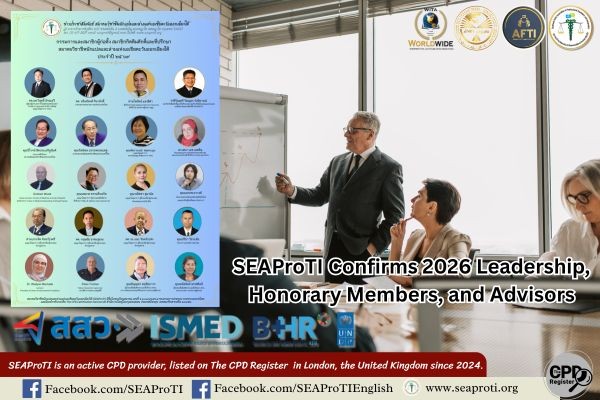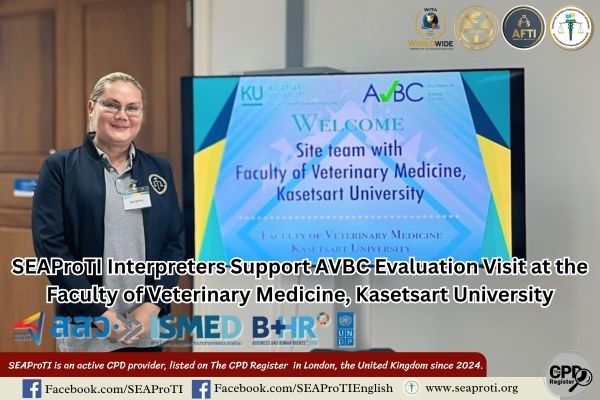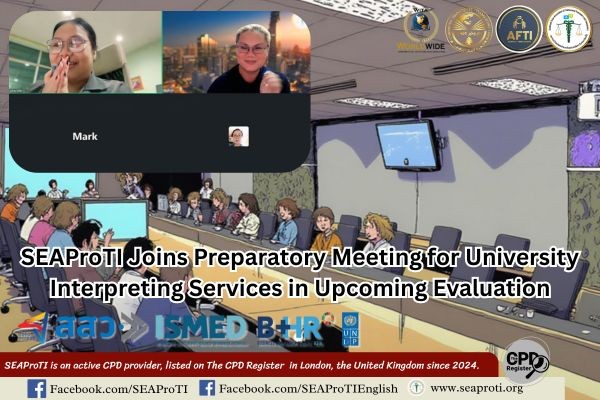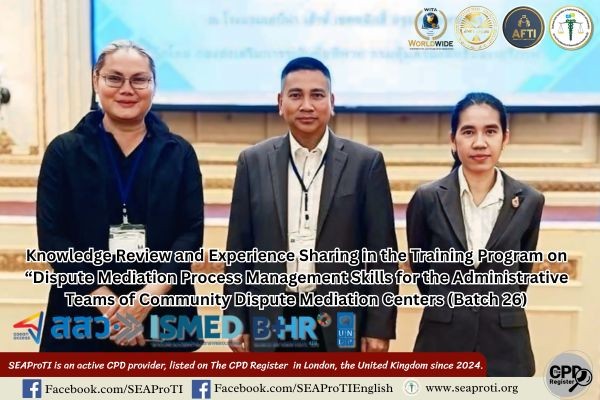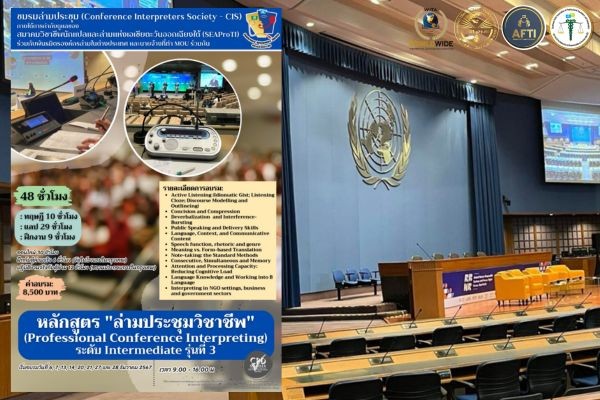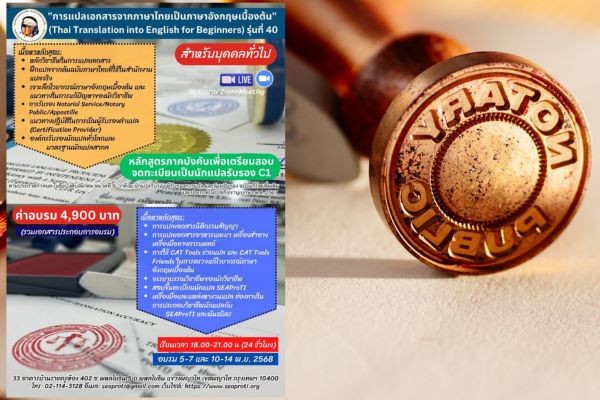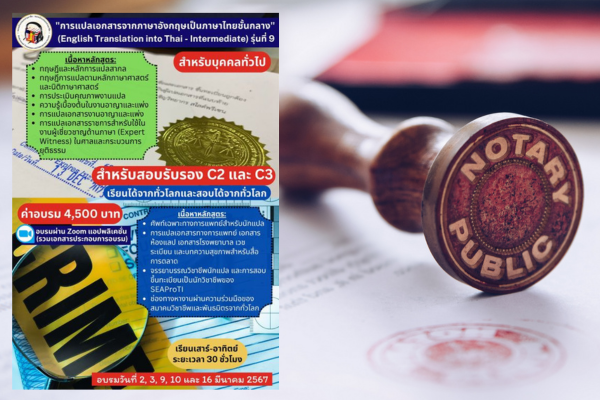Thailand’s Demand for Interpreters:
SEAProTI Reveals Statistics and Predictions in 2025
22 January 2025, Bangkok – In an increasingly interconnected world, the demand for spoken language interpreters in Thailand is rising. But how many interpreters do we actually need, and where are they most needed? This article explores the factors driving demand and provides an in-depth analysis of interpreter needs across different regions.
Factors Driving Demand:
- Economy: International trade, foreign investment, and a thriving tourism sector are key drivers of interpreter demand, particularly in provinces with special economic zones, industrial estates, and major tourist attractions. For example:
- Tourism: In 2019, Thailand welcomed almost 40 million international tourists, generating significant revenue. Despite the impact of COVID-19 in 2020-2021, a recovery is expected in 2023. Interpreters play a vital role in communicating with tourists.
- Foreign Investment: Data from the Board of Investment (BOI) indicates that foreign investment applications reached 1.2 trillion baht in 2022, particularly in target industries like electric vehicles, electronics, and digital technology. These foreign companies require interpreters for business operations.
- Society: Thailand is home to a large number of foreigners, including tourists, businesspeople, and migrant workers. As of June 2023, the Department of Provincial Administration reported over 2.8 million foreigners residing in Thailand. This linguistic diversity increases the need for interpreters in everyday communication, such as in hospitals, police stations, and government agencies.
- Technology: Despite advances in language translation technology, human interpreters remain essential in situations requiring accuracy, precision, and fluency, such as business negotiations, official meetings, and legal proceedings.
Estimated Interpreter Needs by Region:
- Bangkok: The highest demand, estimated at 1,000-2,000 interpreters, particularly for English, Chinese, Japanese, and Korean. This is due to Bangkok being the economic, political, and cultural center of Thailand, with a large foreign population and the highest number of tourist arrivals.
- Major Tourist Provinces:
- Chiang Mai: Estimated demand of 200-500 interpreters, with a focus on English, Chinese, and languages from neighboring countries like Myanmar and Laos.
- Phuket: Estimated demand of 100-300 interpreters, with a focus on English, Russian, and European languages like German and French.
- Chonburi (Pattaya): Estimated demand of 100-300 interpreters, with a focus on English, Russian, Chinese, and Korean.
- Provinces with Special Economic Zones/Industrial Estates:
- Chonburi: Estimated demand of 200-500 interpreters, with a focus on English, Chinese, Japanese, and languages from neighboring countries.
- Rayong: Estimated demand of 100-300 interpreters, with a focus on English, Japanese, and languages from neighboring countries.
- Samut Prakan: Estimated demand of 100-300 interpreters, with a focus on English, Chinese, and languages from neighboring countries.
- Provinces with Universities/Educational Institutions: (e.g., Khon Kaen, Songkhla, Chiang Rai, Phitsanulok, Nakhon Ratchasima) Estimated demand of 50-100 interpreters, with a focus on English and other languages based on the nationalities of international students.
- Border Provinces: (e.g., Chiang Rai, Tak, Nong Khai, Songkhla) Estimated demand of 50-100 interpreters, with a focus on languages from neighboring countries like Myanmar, Laos, Cambodia, and Malaysia.
- Other Provinces: Estimated demand of 10-50 interpreters, with a focus on English and other languages as needed.
Notes:
- These figures are estimates, and actual demand may vary depending on factors such as tourist numbers, foreign residents, and the number of foreign companies in each area.
- Systematic surveys and assessments of interpreter needs in each province are necessary for proper allocation of resources.
Conclusion:
The demand for spoken language interpreters in Thailand is steadily increasing. Surveying, analyzing, and assessing interpreter needs in each region is crucial for effective allocation, development, and management of interpreter resources to support borderless communication and propel Thailand onto the global stage.
Recommendations:
- Develop an Interpreter Database: Compile information on interpreters, their language expertise, and service areas to facilitate access for organizations and the public. SEAProTI has an Interpreter Directory, but the number of certified interpreters may still be limited.
- Promote Interpreter Training: Increase the number of interpreters to meet demand, particularly those specializing in in-demand languages like Chinese, Japanese, Korean, and languages from neighboring countries.
- Improve Access to Interpreter Services: Promote telephone or video conferencing interpreting services to ensure access for people in remote areas.
Developing and promoting the interpreting profession not only meets market demands but also creates opportunities and improves the quality of life for Thais, preparing them to confidently step onto the world stage.
SEAProTI’s certified translators, translation certification providers, and certified interpreters:
The Southeast Asian Association of Professional Translators and Interpreters (SEAProTI) has officially announced the criteria and qualifications for individuals to register as “Certified Translators,” “Translation Certification Providers,” and “Certified Interpreters” under the association’s regulations. These guidelines are detailed in Sections 9 and 10 of the Royal Thai Government Gazette, issued by the Secretariat of the Cabinet under the Office of the Prime Minister of the Kingdom of Thailand, dated July 25, 2024, Volume 141, Part 66 Ng, Page 100.
To read the full publication, visit: the Royal Thai Government Gazette
ประเทศไทยต้องการล่ามกี่คน SEAProTI เผยสถิติความต้องการล่ามแปลภาษาพูด
พร้อมตัวเลขคาดการณ์ในแต่ละพื้นที่ ในปี 2568
22 มกราคม 2568, กรุงเทพมหานคร – ในยุคที่โลกเชื่อมต่อกันมากขึ้น ความต้องการล่ามแปลภาษาพูดในประเทศไทยก็เพิ่มสูงขึ้นตามไปด้วย แต่คำถามสำคัญที่หลายคนอาจสงสัยคือ เราต้องการล่ามมากน้อยแค่ไหน และกระจายตัวอยู่ในพื้นที่ใดบ้าง บทความนี้จะพาคุณไปสำรวจปัจจัยต่างๆ พร้อมวิเคราะห์เชิงลึกถึงความต้องการล่ามในแต่ละภูมิภาค
ปัจจัยขับเคลื่อนความต้องการล่าม
-
เศรษฐกิจ: การค้าระหว่างประเทศ การลงทุนจากต่างชาติ และภาคการท่องเที่ยวที่เติบโตอย่างต่อเนื่อง ล้วนเป็นตัวกระตุ้นสำคัญที่ทำให้ความต้องการล่ามเพิ่มสูงขึ้น โดยเฉพาะในจังหวัดที่มีเขตเศรษฐกิจพิเศษ นิคมอุตสาหกรรม และแหล่งท่องเที่ยวสำคัญ ตัวอย่างเช่น
- ภาคการท่องเที่ยว: ในปี 2562 ประเทศไทยมีนักท่องเที่ยวต่างชาติเข้ามาเกือบ 40 ล้านคน สร้างรายได้มหาศาล แม้ปี 2563-2564 จะประสบปัญหาจากโควิด-19 แต่คาดว่าจะฟื้นตัวในปี 2566 ซึ่งล่ามมีบทบาทสำคัญในการสื่อสารกับนักท่องเที่ยว
- การลงทุนจากต่างชาติ: ข้อมูลจาก BOI ระบุว่าในปี 2565 มีการขอรับการส่งเสริมการลงทุนจากต่างชาติสูงถึง 1.2 ล้านล้านบาท โดยเฉพาะในอุตสาหกรรมเป้าหมาย เช่น ยานยนต์ไฟฟ้า อิเล็กทรอนิกส์ ดิจิทัล ซึ่งบริษัทต่างชาติเหล่านี้ล้วนมีความต้องการล่ามในการดำเนินธุรกิจ
-
สังคม: ประเทศไทยมีชาวต่างชาติอาศัยอยู่จำนวนมาก ทั้งนักท่องเที่ยว นักธุรกิจ แรงงานข้ามชาติ ข้อมูลจากกรมการปกครอง ณ เดือนมิถุนายน 2566 ระบุว่ามีชาวต่างชาติอยู่ในประเทศไทยกว่า 2.8 ล้านคน ความหลากหลายทางภาษาจึงเพิ่มความต้องการล่ามในการสื่อสารในชีวิตประจำวัน เช่น ในโรงพยาบาล สถานีตำรวจ และหน่วยงานราชการต่างๆ
-
เทคโนโลยี: แม้เทคโนโลยีการแปลภาษาจะก้าวหน้า แต่ในสถานการณ์ที่ต้องการความถูกต้อง แม่นยำ และความลื่นไหลในการสื่อสาร เช่น การเจรจาธุรกิจ การประชุมทางการ หรือการพิจารณาคดี ยังคงจำเป็นต้องใช้ล่ามผู้เชี่ยวชาญ
ความต้องการล่ามในแต่ละพื้นที่ (ตัวเลขคาดการณ์)
- กรุงเทพมหานคร: คาดว่ามีความต้องการล่ามมากที่สุด ประมาณ 1,000 – 2,000 คน โดยเฉพาะภาษาอังกฤษ จีน ญี่ปุ่น เกาหลี เนื่องจากเป็นศูนย์กลางทางเศรษฐกิจ การเมือง และวัฒนธรรม มีชาวต่างชาติอาศัยอยู่จำนวนมาก และมีนักท่องเที่ยวเดินทางเข้ามามากที่สุดในประเทศ
- จังหวัดท่องเที่ยวหลัก:
- เชียงใหม่: คาดว่าต้องการล่ามประมาณ 200 – 500 คน เน้นภาษาอังกฤษ จีน และภาษาจากประเทศเพื่อนบ้าน เช่น พม่า ลาว
- ภูเก็ต: คาดว่าต้องการล่ามประมาณ 100 – 300 คน เน้นภาษาอังกฤษ รัสเซีย และภาษาจากประเทศในยุโรป เช่น เยอรมัน ฝรั่งเศส
- ชลบุรี (พัทยา): คาดว่าต้องการล่ามประมาณ 100 – 300 คน เน้นภาษาอังกฤษ รัสเซีย จีน เกาหลี
- จังหวัดที่มีเขตเศรษฐกิจพิเศษ/นิคมอุตสาหกรรม:
- ชลบุรี: คาดว่าต้องการล่ามประมาณ 200 – 500 คน เน้นภาษาอังกฤษ จีน ญี่ปุ่น และภาษาจากประเทศเพื่อนบ้าน
- ระยอง: คาดว่าต้องการล่ามประมาณ 100 – 300 คน เน้นภาษาอังกฤษ ญี่ปุ่น และภาษาจากประเทศเพื่อนบ้าน
- สมุทรปราการ: คาดว่าต้องการล่ามประมาณ 100 – 300 คน เน้นภาษาอังกฤษ จีน และภาษาจากประเทศเพื่อนบ้าน
- จังหวัดที่มีมหาวิทยาลัย/สถาบันการศึกษา: เช่น ขอนแก่น สงขลา เชียงราย พิษณุโลก นครราชสีมา คาดว่าต้องการล่ามประมาณ 50 – 100 คน เน้นภาษาอังกฤษ และภาษาอื่นๆ ตามสัญชาติของนักศึกษาต่างชาติ
- จังหวัดชายแดน: เช่น เชียงราย ตาก หนองคาย สงขลา คาดว่าต้องการล่ามประมาณ 50 – 100 คน เน้นภาษาจากประเทศเพื่อนบ้าน เช่น พม่า ลาว เขมร มาเลเซีย
- จังหวัดอื่นๆ: คาดว่าต้องการล่ามประมาณ 10 – 50 คน เน้นภาษาอังกฤษ และภาษาอื่นๆ ตามความจำเป็น
หมายเหตุ:
- ตัวเลขคาดการณ์นี้เป็นเพียงการประมาณการ ความต้องการที่แท้จริงอาจแตกต่างกันไปในแต่ละจังหวัด ขึ้นอยู่กับปัจจัยต่างๆ เช่น จำนวนนักท่องเที่ยว จำนวนชาวต่างชาติ และจำนวนบริษัทต่างชาติในพื้นที่
- ควรมีการสำรวจและประเมินความต้องการล่ามในแต่ละจังหวัดอย่างเป็นระบบ เพื่อให้สามารถจัดสรรล่ามได้อย่างเหมาะสม
บทสรุป
ความต้องการล่ามแปลภาษาพูดในประเทศไทยมีแนวโน้มเพิ่มสูงขึ้นอย่างต่อเนื่อง การสำรวจ วิเคราะห์ และประเมินความต้องการล่ามในแต่ละพื้นที่ เป็นสิ่งจำเป็น เพื่อให้สามารถจัดสรร พัฒนา และบริหารจัดการทรัพยากรล่ามได้อย่างมีประสิทธิภาพ เพื่อรองรับการสื่อสารไร้พรมแดน และขับเคลื่อนประเทศไทยสู่เวทีโลก
ข้อเสนอแนะ:
- จัดทำฐานข้อมูลล่าม: รวบรวมข้อมูลล่ามแปลภาษาพูด ภาษาที่เชี่ยวชาญ และพื้นที่ให้บริการ เพื่อให้หน่วยงานต่างๆ และประชาชนสามารถเข้าถึงบริการล่ามได้สะดวก ของ SEAProTI มี Directory ล่าม อย่างไรก็ตาม จำนวนล่ามรับรองอาจจะยังมีจำนวนไม่มากนัก
- ส่งเสริมการฝึกอบรมล่าม: เพื่อเพิ่มจำนวนล่ามให้เพียงพอต่อความต้องการ โดยเฉพาะล่ามที่เชี่ยวชาญในภาษาที่เป็นที่ต้องการของตลาด เช่น ภาษาจีน ภาษาญี่ปุ่น ภาษาเกาหลี และภาษาจากประเทศเพื่อนบ้าน
- พัฒนาช่องทางการเข้าถึงล่าม: ส่งเสริมบริการล่ามทางโทรศัพท์ หรือล่ามผ่านวิดีโอคอนเฟอเรนซ์ เพื่อให้ประชาชนในพื้นที่ห่างไกลสามารถเข้าถึงบริการล่ามได้
การพัฒนาและส่งเสริมอาชีพล่าม ไม่เพียงแต่ช่วยตอบสนองความต้องการของตลาด แต่ยังเป็นการสร้างโอกาส และยกระดับคุณภาพชีวิตของคนไทย ให้พร้อมก้าวสู่เวทีโลกอย่างมั่นใจ
เกี่ยวกับนักแปลรับรอง ผู้รับรองการแปล และล่ามรับรองของสมาคมวิชาชีพนักแปลและล่ามแห่งเอเชียตะวันออกเฉียงใต้
สมาคมวิชาชีพนักแปลและล่ามแห่งเอเชียตะวันออกเฉียงใต้ (SEAProTI) ได้ประกาศหลักเกณฑ์และคุณสมบัติผู้ที่ขึ้นทะเบียนเป็น “นักแปลรับรอง (Certified Translators) และผู้รับรองการแปล (Translation Certification Providers) และล่ามรับรอง (Certified Interpreters)” ของสมาคม หมวดที่ 9 และหมวดที่ 10 ในราชกิจจานุเบกษา ของสำนักเลขาธิการคณะรัฐมนตรี ในสำนักนายกรัฐมนตรี แห่งราชอาณาจักรไทย ลงวันที่ 25 ก.ค. 2567 เล่มที่ 141 ตอนที่ 66 ง หน้า 100 อ่านฉบับเต็มได้ที่: นักแปลรับรอง ผู้รับรองการแปล และล่ามรับรอง
